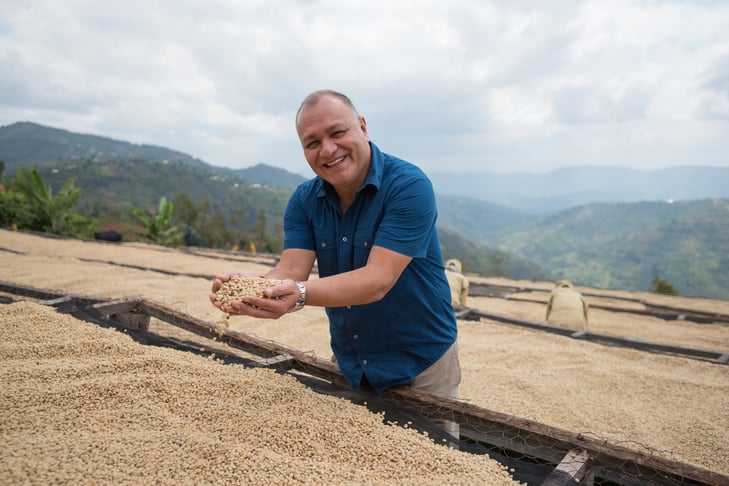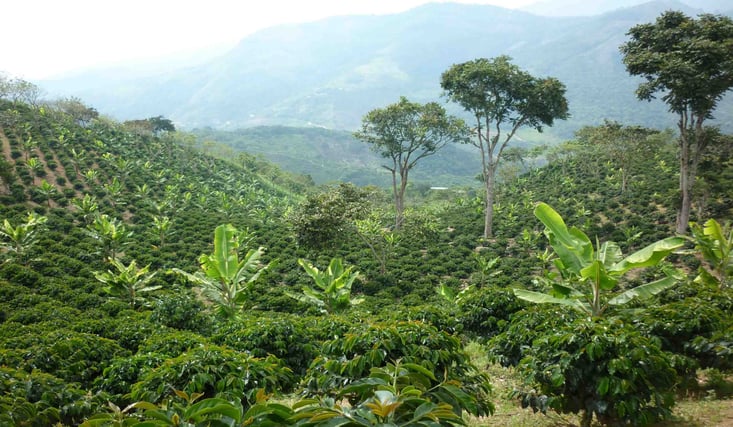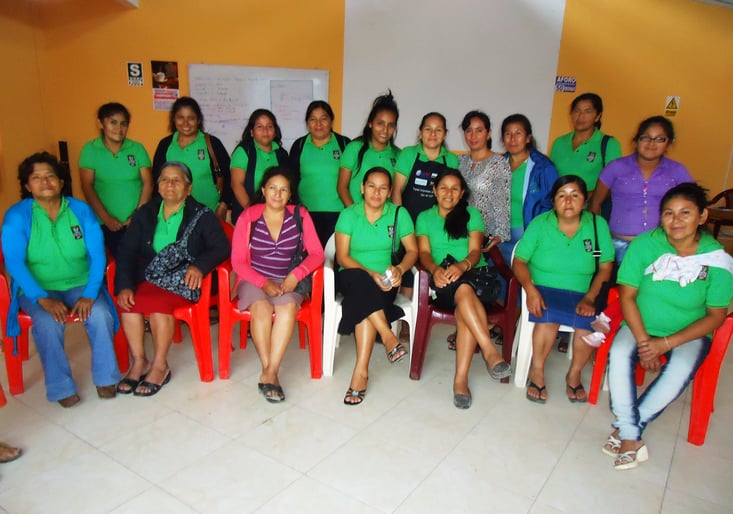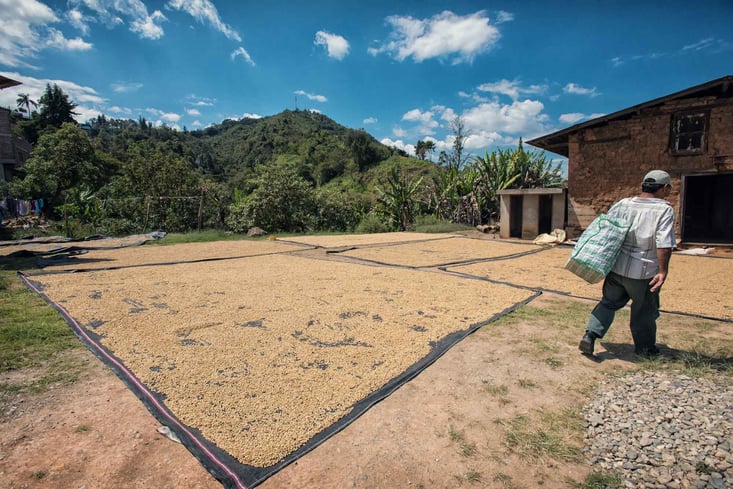
It should be no surprise that Peru is one of our most beloved origins at Sustainable Harvest: it’s home to one of our origin offices and some of our longest-standing relationships.
Despite being one of the world’s top producers of Arabica, the leading producer of Fair Trade certified coffee, and the second-highest producer of organic coffee, Peru is sometimes considered to be an underdog on the specialty coffee scene with powerhouses like Colombia and Brazil often stealing the spotlight in South America.
This perception has been steadily changing in recent years, however, as more buyers are taking note of the standout coffees coming from Peru. The dense shade of the lush forest canopy and towering altitude of the Andes (only the Himalayas reach higher) create the perfect environment for cultivating world-class coffees that are exceptionally sweet, complex, and floral—coffees worthy of taking center stage. In 2017, Peru held its first Cup of Excellence competition and since then, a number of local competitions have emerged and become “trendy” as noted by our Supply Director in Peru, Oscarin “El Maestro” Gonzales.
While farmers still face tough infrastructural, organizational, and market access challenges, the increased production of top-quality coffee is a sure sign for the future as farmers continue to overcome these obstacles and receive well-deserved recognition for their hard-won efforts. As we anticipate the arrival of fresh coffees from Peru, we check in with Oscarin for his latest insights.
 The view from Union y Fe
The view from Union y Fe
How has coffee production in Peru been changing and what are some interesting things happening right now?
All cooperatives have become aware that managing and producing high-quality coffees is what will help them to be profitable and have better market access. Many producers are now also learning to cultivate a range of different varieties, including ones that were once produced in the past. They have revitalized varieties such as Caturra, Pache, Bourbon, and Typica, and are learning from the best cooperatives in Colombia, Brazil and in Central America. They are taking examples from these cooperatives and applying better practices to their own farms; our origin office, as a result, has grown to move more spot, especially micro-lots, and lots with history. Overall, the cooperatives in Peru are working more professionally.
Co-op leaders are more aware of the need for diversity and there are now more women leaders present.
Many producers are embracing the use of new technologies on their farms; a great example is Alto Mayo. Farms were previously very traditional and, in some cases, disorganized, but that is no longer the case. Producers are utilizing modern equipment and implementing organizational systems and you can really appreciate now how orderly the farms are.
Producers are also experimenting with micro-lot coffees and with different processing methods that can incorporate, for example, extended fermentation periods. Producers are implementing different infrastructures for drying coffee, like sliding platforms. All this was not seen before, but producers are now eager to invest in new and better methodologies.
 Women leaders from Aproeco
Women leaders from Aproeco
Among cooperatives, the leadership structure is also changing for the better. Co-op leaders are more aware of the need for diversity and there are now more women leaders present. Peru is, traditionally, a very macho country; previously the husbands did not let their wives participate, but now we see more independent women, and women in leadership roles and doing more interesting things in the cooperatives.
Coffee production is moving towards the Andes...Cajamarca in particular has received a lot of attention from buyers for the last 3 years and I consider Peru’s best coffees to be produced there.
Local coffee competitions and events have become trendy and popular in Peru. The producers are directly involved and the opportunity to promote high-quality coffee has created an increase in the country's domestic consumption.
How was the harvest season this past year?
10 years ago, the level of production would alternate from year to year—very good one year but unpredictable for the next. In the last four years, however, the production has been more regular, if lower. In terms of quality, though, we have seen significant improvement year by year. Peru is a country that takes a long time to see change, but each year our producers are innovating and learning and the results are seen in the cup.
Coffee production is moving towards the Andes with much coffee being produced in colder places like Sierra; these areas are currently very popular among buyers and have stood out for their quality. Areas like Cajamarca, Cutervo and Querocoto are new regions receiving recognition for excellent coffees. Cajamarca in particular has received a lot of attention from buyers for the last 3 years and I consider Peru’s best coffees to be produced there.
 Coffee drying at Chirinos
Coffee drying at Chirinos
Sustainable Harvest has a strong advantage in Peru given that 50% of our Peruvian coffee supply comes from Cajamarca, the most important region. We also have all the production from Querocoto and Rutas del Inca, and are looking to add Cutervo, Chirinos, Tabaconas, San Ignacio and Jaen. Sustainable Harvest is well-positioned in Querocoto, where we have been working very hard to obtain greater volumes in that region.
Any favorite coffees or ones that stood out?
Rutas del Inca has been consistently excellent since we first started working with this coffee. As soon as you put it on the cupping table, it is very recognizable with very sweet notes of honey and plum. This coffee is produced in an area with a rich history and a diverse microclimate, and I think that is reflected in the complexity of this coffee. It really has everything.
Union y Fe is a very interesting co-op in Cajamarca. Years ago, I tried coffees produced by Chirinos and Frontera San Ignacio that were as rich as the ones from Union y Fe. But those have since faded away, and are no longer produced by those cooperatives. Now, that rich profile of molasses, caramel, and tropical fruit can be found in the coffees from Union y Fe.
Sustainable Harvest has a strong advantage in Peru given that 50% of our Peruvian coffee supply comes from Cajamarca, the most important region.
In the last 3 years, Aproeco have been working with very interesting coffees from San Martin and they have also been experimenting with different processing methods. They managed to get coffee from regions very close to the Amazon and on the border with Cajamarca. These coffees coming from distant and unique areas bring distinct and new flavor characteristics to what is conventionally found in San Martin, which usually have a profile of young cane sugar and high acidity. Now you can find more sweetness and dark molasses and coffee from Aproeco. It almost tastes like a blend from Rutas del Inca and Union y Fe.
Asprocafe’s coffees have also been exhibiting many similarities to Rutas del Inca. These coffees are grown in a special microclimate in Cajamarca and during harvest, the coffees are meticulously sorted and the lots are precisely separated. It is easy to find notes of sugar cane, peach, mango, and plum.
Explore our current Peru spot offerings:
Reach out to our team at trade@sustainableharvest.com or via the form below to request a sample of our Peru spot offerings!



.png)
